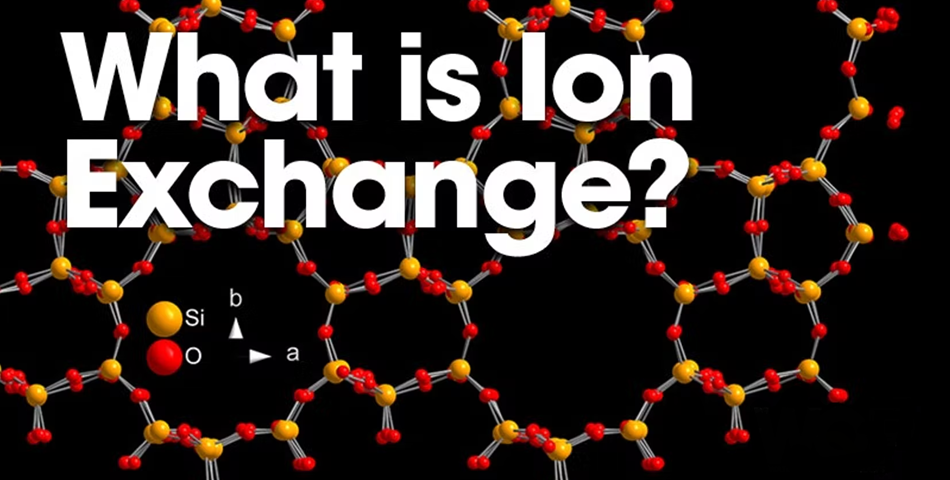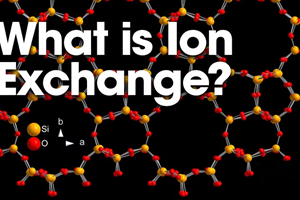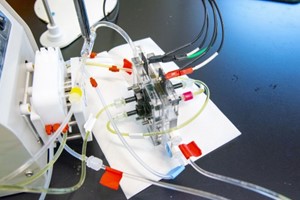Ion exchange is the process of exchanging unwanted dissolved ions with more desirable ions. This guide will look at the ion exchange process in detail, including how it works, its benefits, and its uses.
How Does Ion Exchange Work?
In the ion exchange process, ions — molecules or atoms that contain unequal total numbers of protons and electrons — are exchanged, replacing undesirable ions with desirable ions.
There are two different types of ions: cations and anions. Cations are positively charged ions, while anions are negatively charged ions.
A liquid and a solid are needed for ion exchange. Usually, the liquid is water, and the solid is a material such as resin or zeolite.
In the cation exchange process, the solid material is negatively charged. This negative charge attracts a desirable positively charged cation, such as sodium chloride or hydrochloric acid. When water comes into contact with the solid material, the undesirable cations are attracted to the material. An equal number of desirable cations are released back into the water from the solid material to balance the charge of the water.
The result of this process is that the undesirable cations are completely removed from water, replaced with equal parts desirable cations.
The same process happens in the anion exchange process, except that the solid material is positively charged and attracts negatively charged anions.
Recharging an Ion Exchange Resin
Ion exchange resins eventually become depleted of desirable cations or anions, meaning that ion exchange can no longer take place. At this point, the resin will need to be regenerated — or refilled with desirable ions — to continue to perform effectively.
During regeneration, the resin will first be washed out with a liquid to remove the undesirable cations or anions. Next, the desirable ions will be carried into the resin, where they will be attracted to the resin and stick to its surface until the resin is fully saturated with these ions once more.
The frequency of recharging the resin depends on several factors, including:
- The quality of water. The more undesirable cations or anions the water contains, the greater the number of desirable cations or anions that will be used in the ion exchange process, depleting the resin faster.
- The amount of water used. The more water used per day, the faster the resin will become depleted, requiring more frequent regenerations.
Ion Exchange for Treating Drinking Water
A popular use of ion exchange is in drinking water treatment. Specialized resins are used to remove a number of common water impurities, including calcium, magnesium, uranium, arsenic, nitrates, perchlorate and boron.
Ion exchange for water treatment takes place in water softeners or water filters, depending on the desired outcome of the treatment.
Ion Exchange in the Food Industry
Ion exchange is also used in the food industry. Fruit juice and wine processing, cane sugar decolorization, and whey demineralization all use ion exchange for specific purposes. Ion exchange can be used to exchange mineral salts and lactose with more desirable or valuable substances.
Benefits of Ion Exchange
The biggest benefits of ion exchange are:
- Highly effective process. Ion exchange is one of the most effective ways to separate charged particles from liquids. Ion exchange is a scientifically-proven method that, in the right water parameters, is guaranteed to work.
- Powerful water softening method. No other water treatment method is as effective at softening water as ion exchange.
- Cheap to maintain. The biggest maintenance task involved in running an ion exchange system is topping up the desirable ions. For small-scale household applications, this costs less than $100 per year.
- Long lifespan. Ion exchange resins have lifespans of at least six years, with the potential to last beyond 12 years. Replacing the resin is far from a frequent task.
- Different contaminants removed. There are various types of ion exchange resin, and each resin can remove a specific set of contaminants. This allows you to be selective with your water treatment processes.
Setbacks of Ion Exchange
Several setbacks of ion exchange are:
Can be limited by water quality issues. The efficacy of ion exchange can be affected by scaling, fouling, and clogging on the resin. In many cases, a pre-treatment process like filtration is needed to prevent these issues.
Resin requires replenishing. Ion exchange can only continue to be effective if the resin is replenished with desirable cations or anions, and the undesirable ions are flushed away. Regeneration wastes water and requires constant access to desirable ions.
Increases water’s acidity. Ion exchange is often used to remove minerals that contribute to water’s alkalinity, which can result in an increased acidity and a higher likelihood of metal leaching.
Takeaway
Ion exchange is an efficient, reliable process that is particularly effective when used for food and water treatment purposes. Ion exchange remains the most popular and effective water softening solution today.













